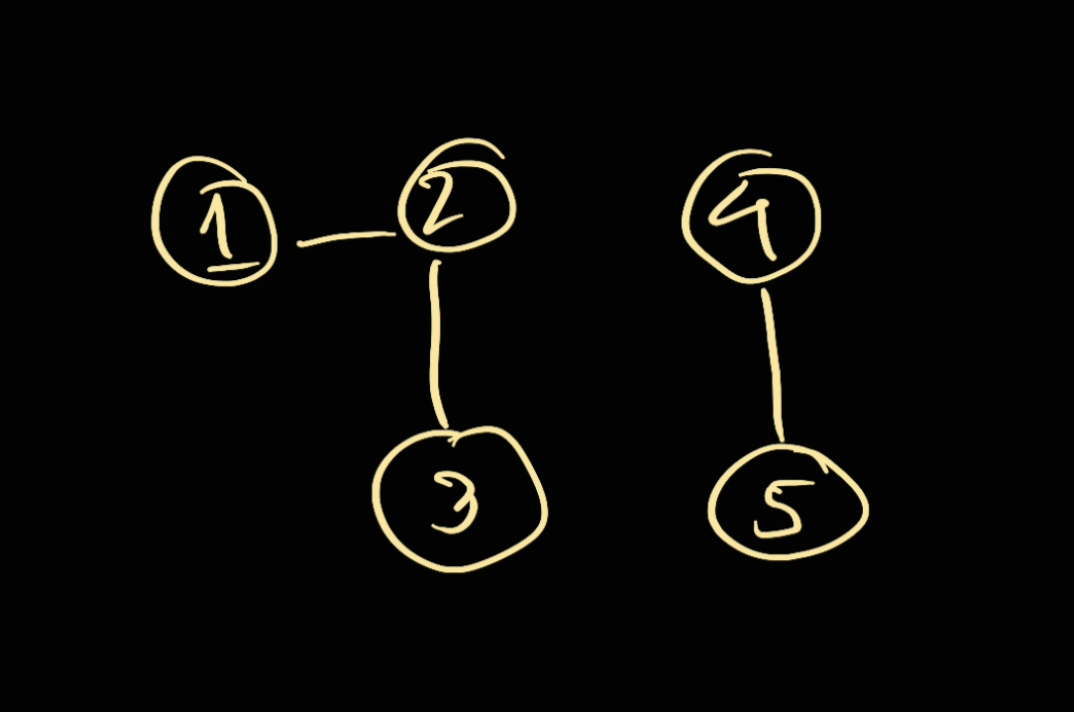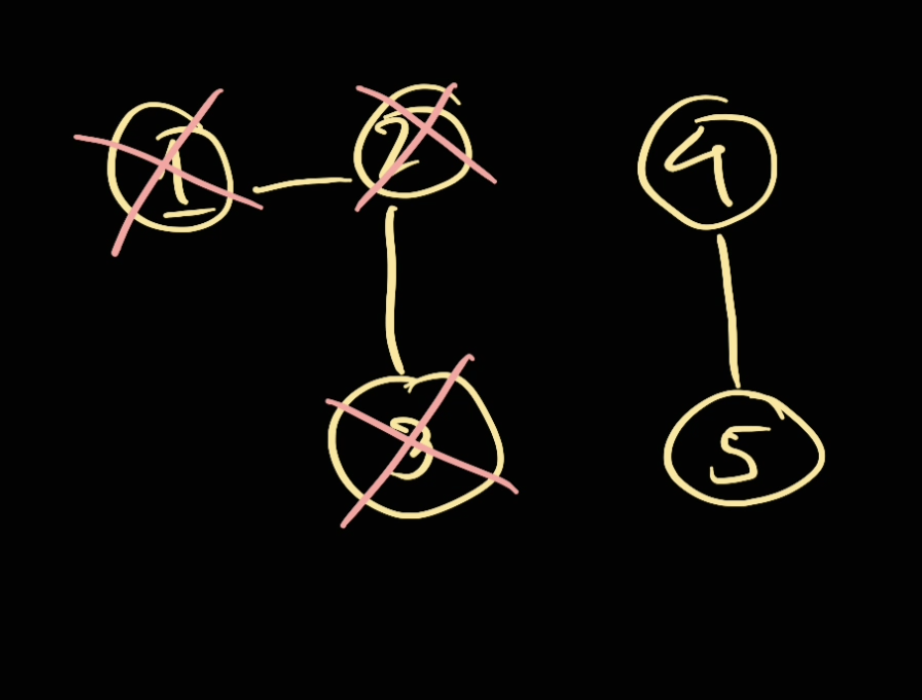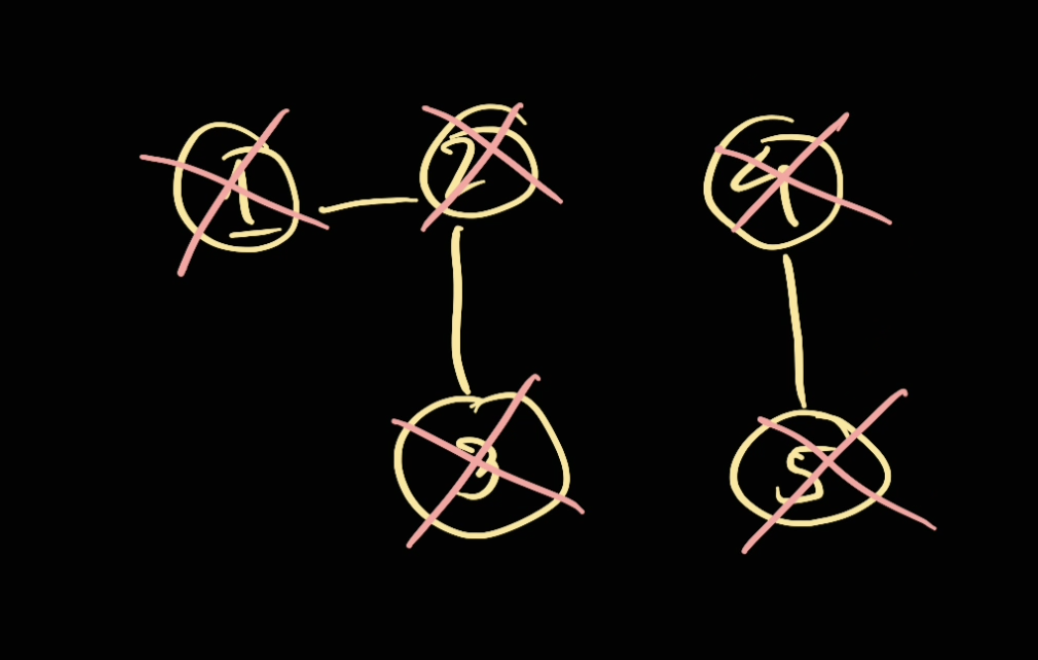Number Of Connected Component In A Graph
Question
591 · Connecting Graph III - LintCode
Given n nodes in a graph, denoted 1 through n. ConnectingGraph3(n) creates n nodes, and at the beginning there are no edges in the graph.
You need to support the following method:
connect(a, b), an edge to connect node a and node bquery(), Returns the number of connected component in the Graph Traversal
Example 1:
Input:
ConnectingGraph3(5)
query()
connect(1, 2)
query()
connect(2, 4)
query()
connect(1, 4)
query()
Output:[5,4,3,3]
Example 2:
Input:
ConnectingGraph3(6)
query()
query()
query()
query()
query()
Output:
[6,6,6,6,6]
Solution
DFS way
This problem can be solve the using the same technique as Number of Islands.
For example in here:

We can just simply go from 1 node (for example 1) and mark everything as visited:

After that, we can increment the count by 1.
We do the same thing for 4:

Therefore, the number of connected components is now 2
Implementation
from typing import *
from collections import defaultdict
class ConnectingGraph3:
n: int
adjacencyList: Dict[int, List[int]]
def __init__(self, n):
self.n = n
self.adjacencyList = defaultdict(lambda: [])
def connect(self, a, b):
self.adjacencyList[a].append(b)
self.adjacencyList[b].append(a)
def query(self) -> int:
count = 0
visited = set()
for node in range(1, self.n + 1):
if node in visited: continue
visited.add(node)
self.visitGroup(node, visited)
count += 1
return count
def visitGroup(self, node: int, visited: Set):
toVisit = [node]
while toVisit:
currNode = toVisit.pop()
for neighbour in self.adjacencyList[currNode]:
if neighbour in visited: continue
toVisit.append(neighbour)
visited.add(neighbour)
Time complexity: — is the number of node (n) and is the number of connected edge (connect)
Space complexity: — We have to maintain adjacencyList and for the BFS traversal.
Note:
- In here we use the concept of Adjacency List to create our graph for simplicity instead of creating a node class.
- In the
query, we count from1toself.n + 1because that's just how they test thequeryfrom1ton
Union Find way
We can also use Union Find to tackle this problem. So we keep track of numberOfComponent and minus 1 for every single successful union operation.
Implementation
class AppUnion:
def __init__(self, n):
self.unionFind = UnionFind(n)
self.numberOfComponent = n
def connect(self, a, b):
# Since for this question we count from `1`,
# And our [[Union Find]] counts from `0`
# We're minusing 1 for both `a`, and `b`
success = self.unionFind.union(a - 1, b - 1)
if success:
self.numberOfComponent -= 1
def query(self) -> int:
return self.numberOfComponent
Time complexity: — as explained in Union Find
Space complexity: — to store Union Find parents and number of elements